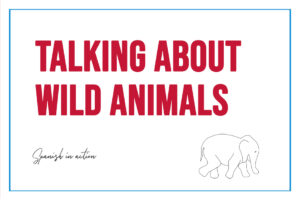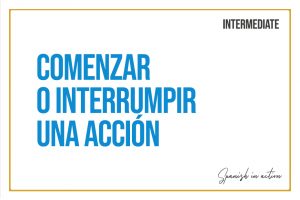By Lucía Rodríguez.
When beginner students must deal with the words “bueno/good” and “bien/well” in Spanish, they tend to be mixed up often.
This post will clarify once and for all when and how you should use bueno, buen, and bien in Spanish, so you will feel confident when you use them.
Bien vs. Bueno
Bueno can be translated into English as good. It is an adjective used to describe people, animals, and objects. As an adjective it will change in gender and number to match the noun.
—Mi nieto un niño muy bueno. (My grandchild is a very good boy.)
—Tomar agua es bueno para tu salud. (Drinking water is good for your health.)
—Es una película buenísima. (It is a really good movie.)
On the other hand, bien is translated as “well, correctly.” Bien is an adverb, and as such, it usually describes how the action (verb) is doing. In other words, an adverb modifies a verb. If we ask the verb “How?” we can find the answer in the adverb.
—Ana habla bien Inglés. (Ana speaks well English)
How does Ana speak English? –Bien.
—Nosotros nos comunicamos bien. (We communicate well)
How do we communicate? -Bien.
Other uses of Bien
The first meaning you will see in the dictionary is “well” it can also mean “very,” “all right,” “bravo” between others.
-When you want to emphasize the adjective in a sentence.
Here the adverb bien is equivalent to the adverb muy (very) especially in Latin-America.
—Esta comida está bien sabrosa . (“This food is very tasty”)
—Tu vestido es bien bonito (“Your dress is very nice”)
-Agreement.
This can be applied to almost any kind of question in informal situations. You can use OK, claro (of course), vale (okay) or any other short answer you may know, and that includes bien:
—Nos vemos a las cinco en la oficina. —Bien. (“We are meeting at five in the office” “Okay.”)
—Vente a cenar, ¿vale? —Bien, no hay problema. (“Come have dinner, won’t you?” “Cool, no problem.”)
—¿Te va bien a las ocho? —Bien, allí estaré. (“Does eight a.m. suit you?” “All right, I will be there.”)
-When you want to encourage someone
We have the word bravo in Spanish, but it is very common, at least among kids in the South of Spain, to shout ¡Bien! instead of ¡Bravo! when they are happy, receive good news, get praised for doing something correctly, etc.
—Aprobaste el examen. —¡Bien! (“You approved the test.” “Yahoo!”)
—¡Qué bien! Ya he terminado de trabajar. (“Bravo! I have finished working”)
—Mi hermano es campeón de tenis. —¡Bien! (“My brother is a tennis champion ” “Bravo!”)
-Expressions and Phrases with Bien
—¿Todo bien? (Is everything all right?)
—¡Bien hecho! (Well done!)
—Está bien (It’s Okay/fine, all right)
—Ya está bien (Enough is enough)
—Así está bien (That way is fine)
—Bastante bien (Quite well)
—Caer bien (To make a good impression, to be liked by)
—Portarse bien (To behave well)
—Dársele bien algo a alguien (To be good at)
—Estar bien empleado (To serve someone right)
Bueno or Buen.
Their meaning is the same. However, their position in the sentence is different.
Bueno is used after a masculine singular noun. It also has the possibility of appearing in front of the same masculine singular nouns. The sentence will mean the same, but bueno has to lose its final -o in order to be in that position:
—Tengo un buen padre. (I have a good father.)
—Tengo un padre bueno. (Pablo is a good father.)
—Es un buen libro. (It is a good book.)
—Es un libro bueno. (It is a good book.)
Other uses of Bueno
Although the first meaning you will see in the dictionary is “good,” it can also mean “tasty,” “useful,” “beneficial” and even “hello!”
-When something is beneficial.
If something is beneficial for you and your health, you say it is bueno for you. Other case you can say is it not good.
—Fumar no es bueno para la salud. (Smoking is not good for your health.)
—Tomar agua es muy bueno. (Drinking water is very good/beneficial.)
-When the quality of an object is high.
When the quality of something is above average, you can also use the word bueno in Spanish to describe it.
—¡Qué buen coche! (What a good car!)
—Necesito un teléfono bueno. (I need a good phone.)
-When something is tasty.
We use the word bueno when something tastes good. Same in a negative way if a food tastes bad.
—Esta pasta está buenísima. (This pasta is tasty.)
—El pescado no está bueno. Tiene un olor raro. (The fish is bad. It smells weird)
-When you agree to a proposal.
You can use bueno to agree to do something, is a good answer to say yes, okay, all right, fine to a question.
—Nos vemos en el restaurante. —Bueno. (“We are meeting at the restaurant.” “Okay.”)
—Ven a trabajar el martes, ¿Sí? —Bueno, no hay problema. (“Come to work on Tuesday, Ok?” “Cool, no problem.”)
—¿Vienes a la fiesta? —Bueno, allí estaré. (“Do you come to the party?” “All right, I will be there.”)
-Other expressions with Bueno
Bueno (Well, so)
¡Bueno! (Enough already!)
¡Qué bueno! (Awesome!)
Ser bueno en algo (To be good at something)
El visto bueno (The seal of approval)
As I always say, try to use what you learn. So, from today use bien or bueno every time you can. You will understand the difference better once you put these words into practice. Let’s put your Spanish into action!
o0o



